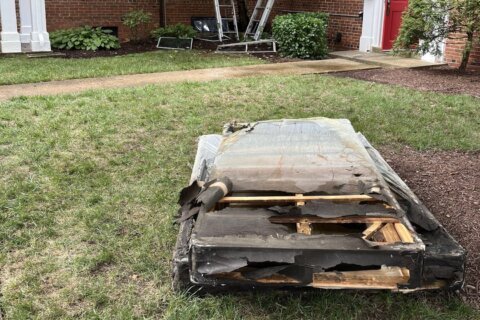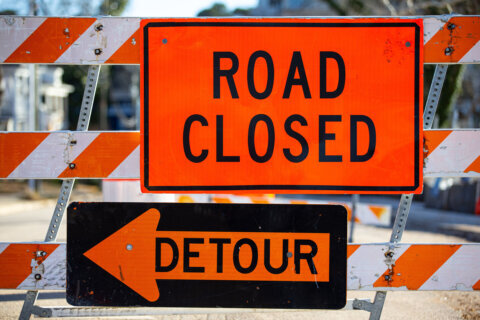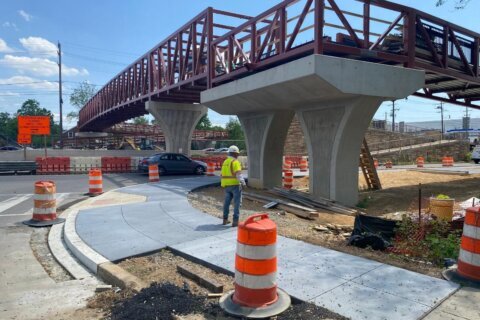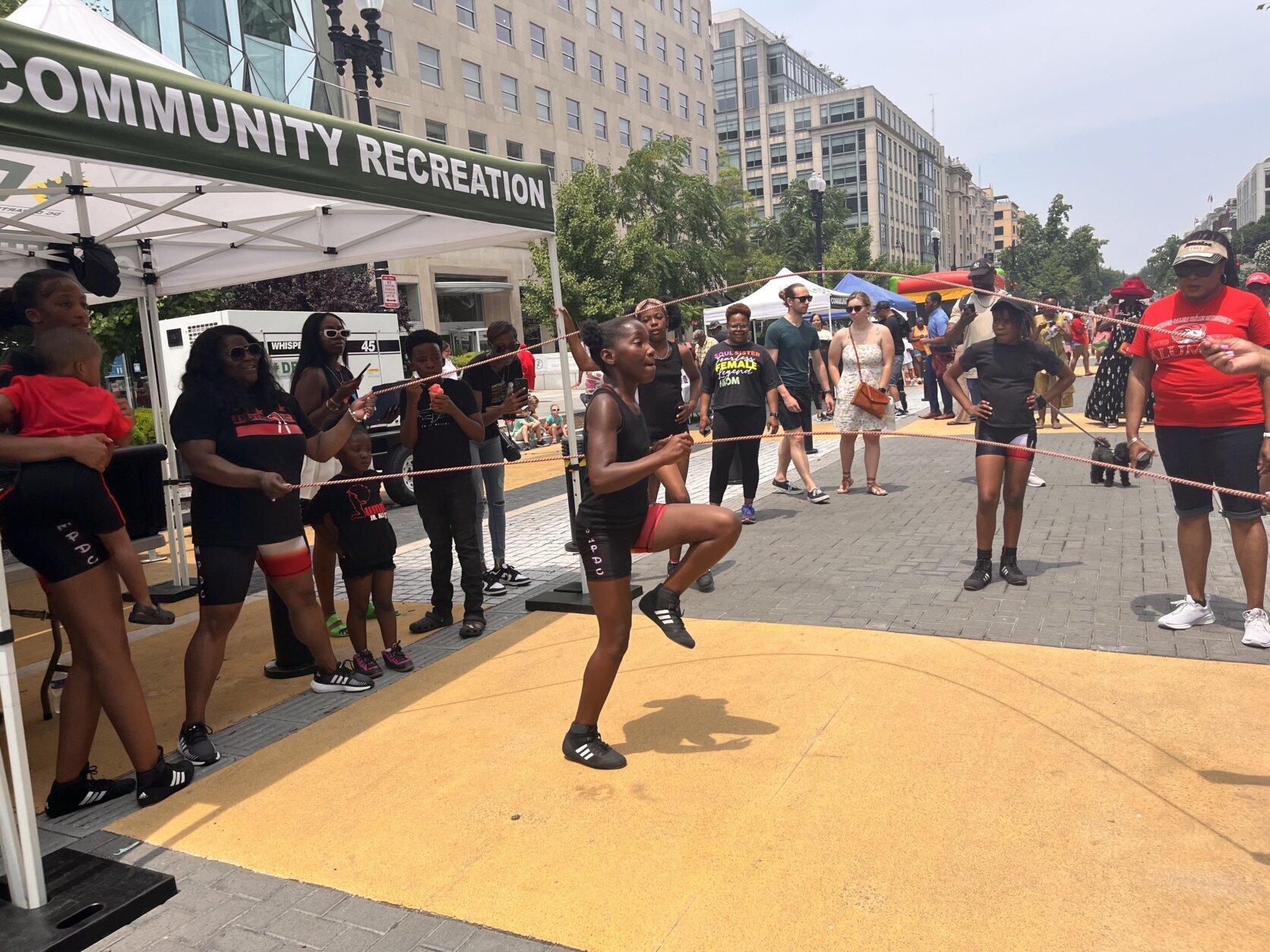
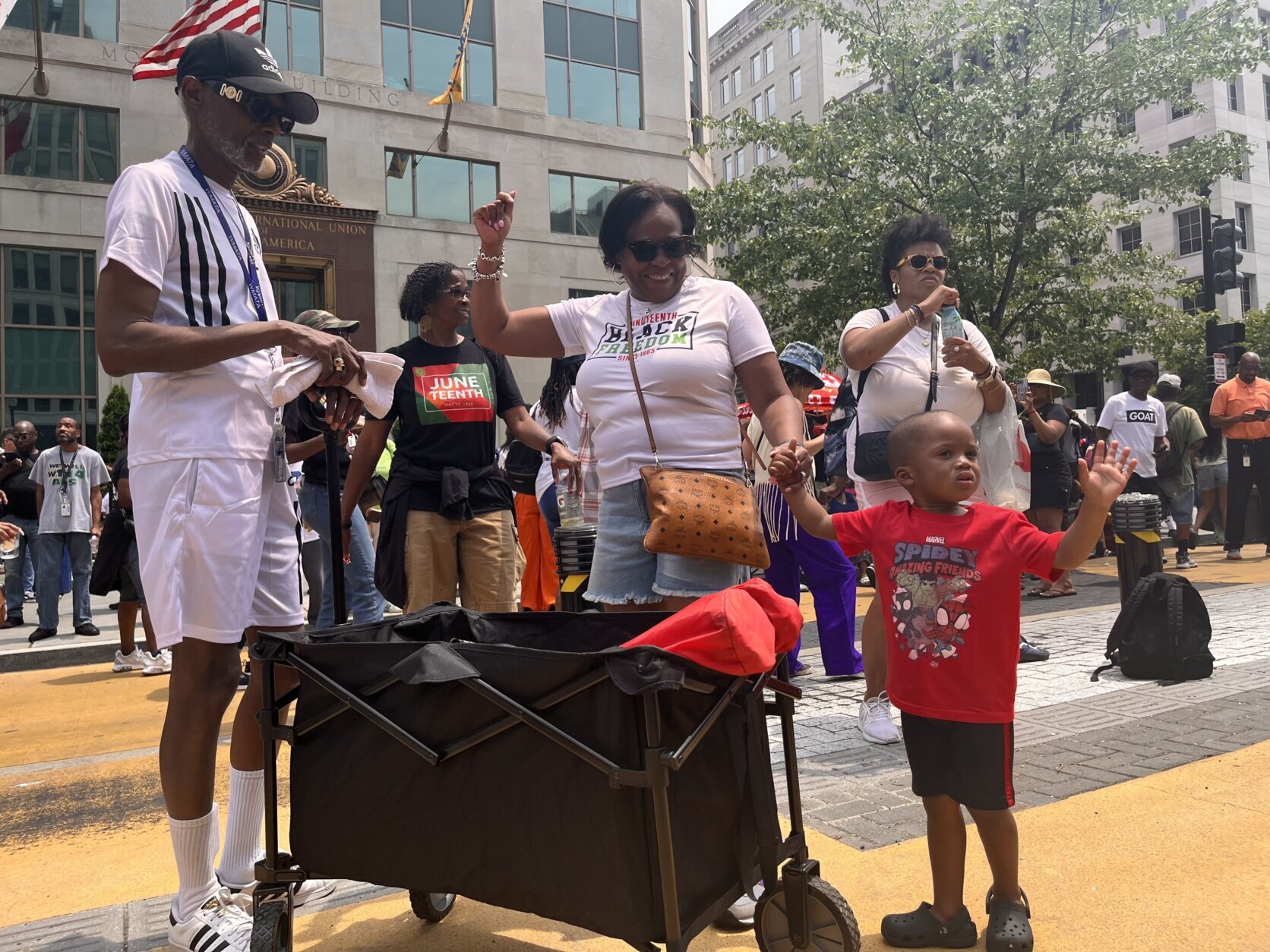
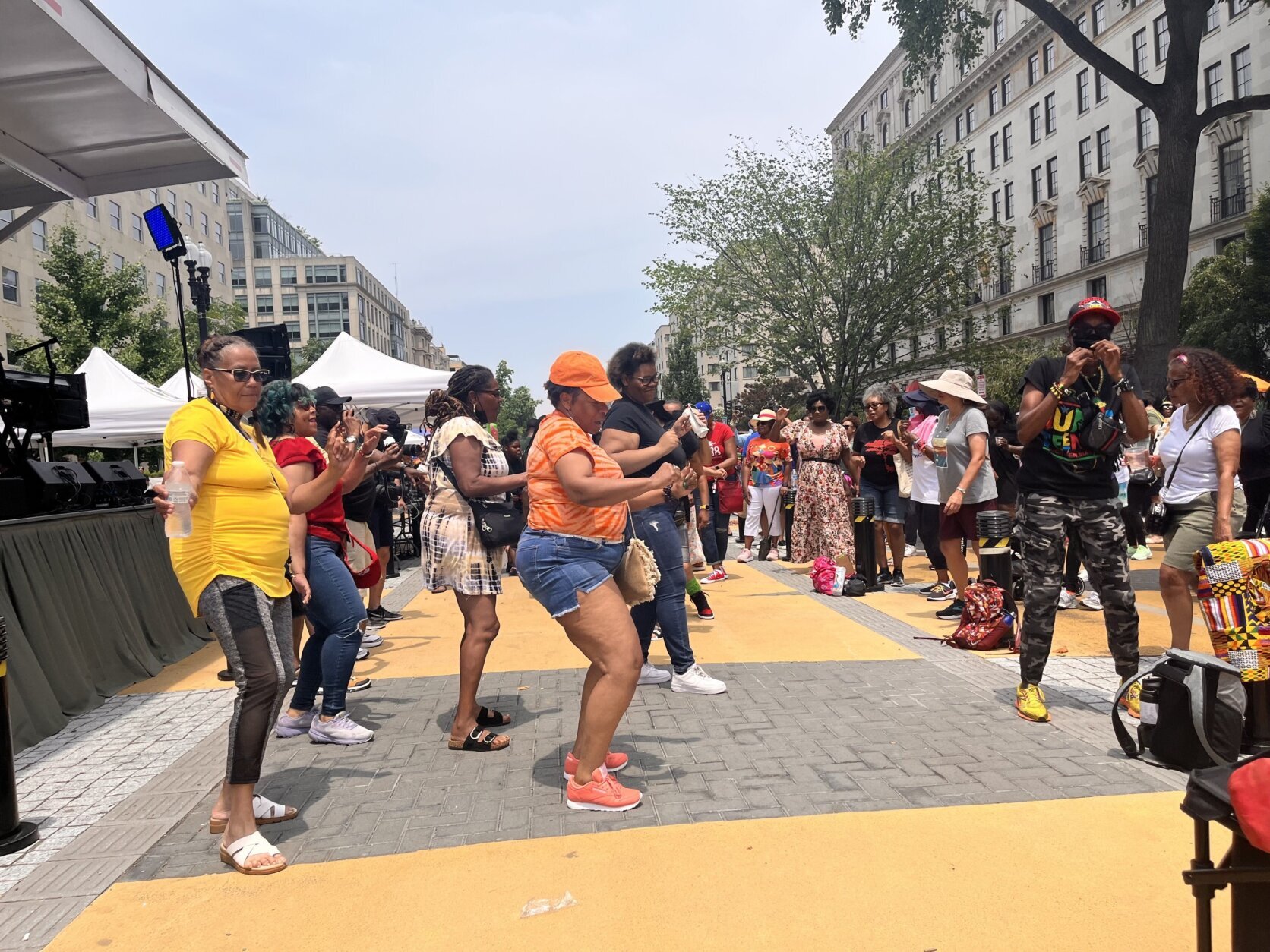
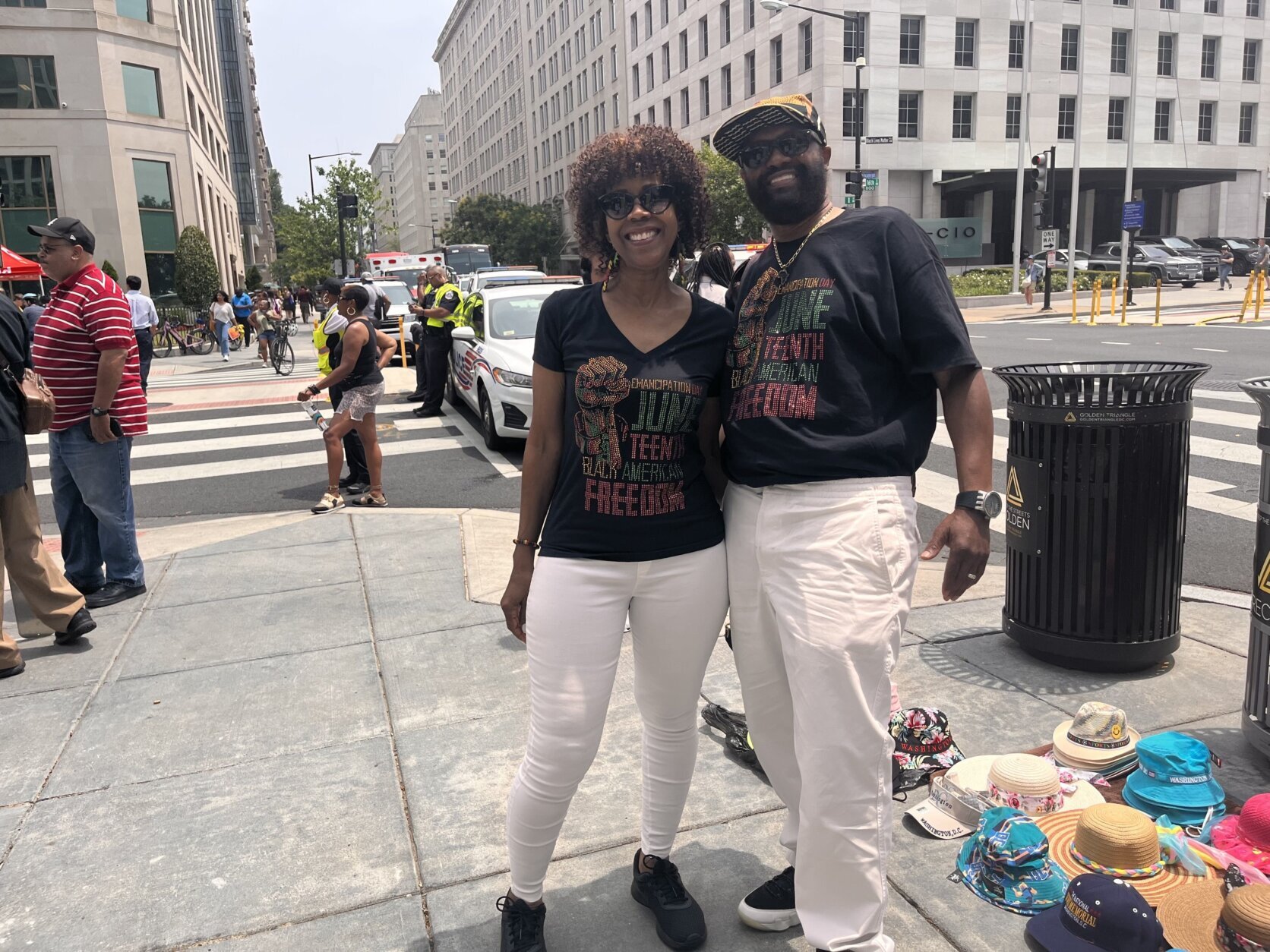
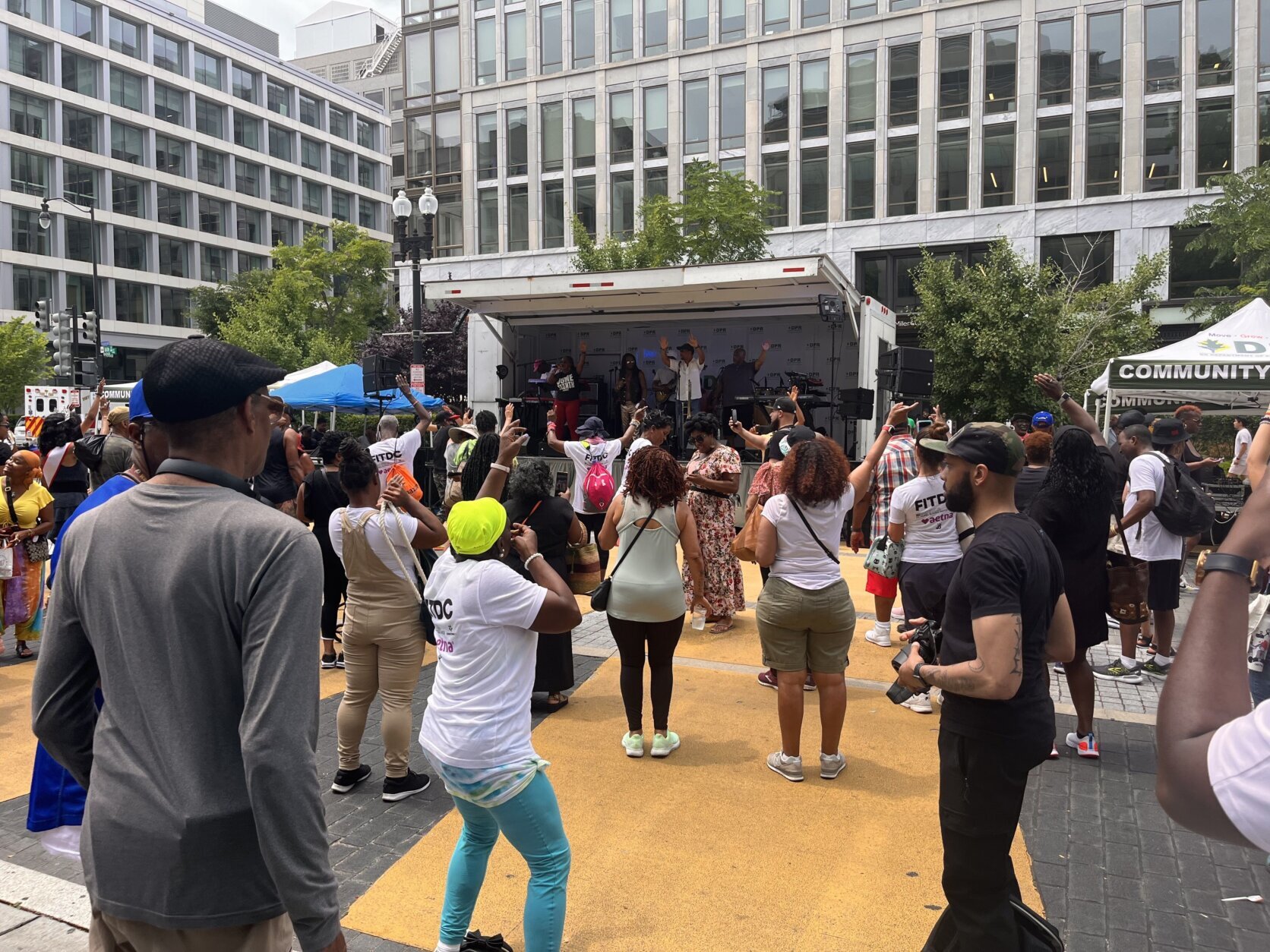
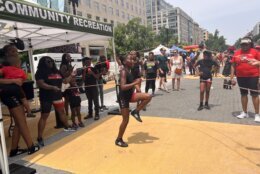
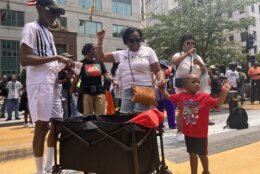
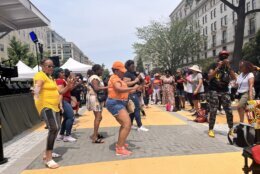
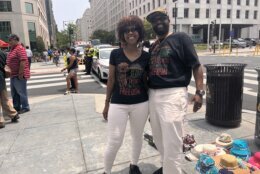
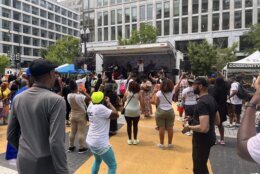
Crowds came out in droves to Black Lives Matter Plaza in downtown D.C. Monday to mark the day 158 years ago when the last enslaved people in the U.S. were told slavery was over.
The block party, organized by Mayor Muriel Bowser’s office, featured live music performances, a kid zone with a bounce house, family friendly activities and lots of dancing.
LaToya Foster, director of the District’s Office of Cable Television, Film, Music and Entertainment (OCTFME), said that the event was about bringing people together.
“This is about a celebration of unity, the culture, of connectedness throughout our city and throughout our country,” Foster said. “We all need to connect.”
She said the afternoon party lineup included performances from Grammy-nominated go-go band EU featuring Sugar Bear and Grammy-nominated gospel artist Anthony Brown, along with other acts.
Keisha Nelson, from Brandywine, Maryland, said Juneteenth is also a reminder that there is more work to be done, and that having the celebration near the White House was powerfully symbolic.
“I think about the fact that Black folks were serving in that house and helped to build that house,” Nelson said. “Even now, we’re still working toward developing more opportunities that feel a little bit more equitable than they are today.”
The White House was built in part by enslaved people. Early presidents also brought enslaved workers with them to the White House to save money on hiring domestic staff, according to the White House Historical Association.


